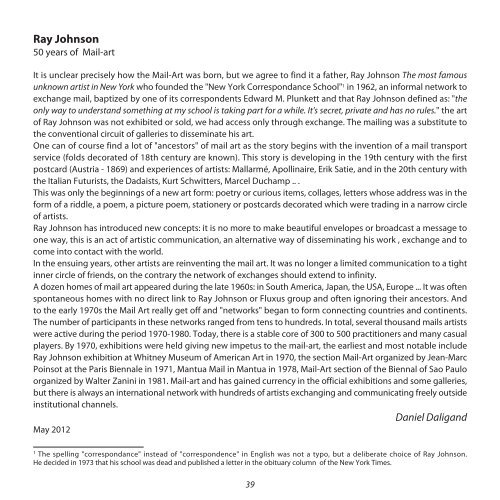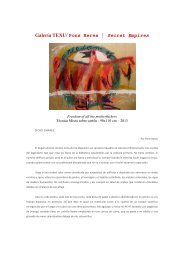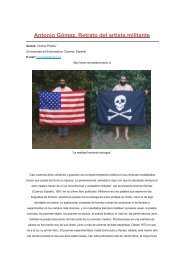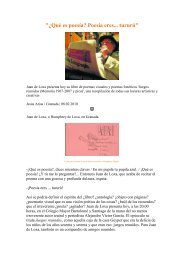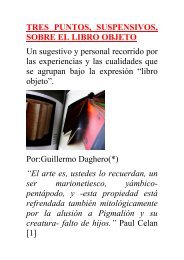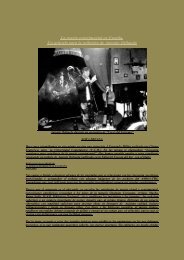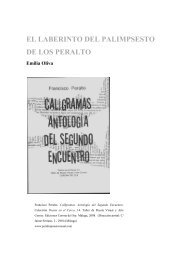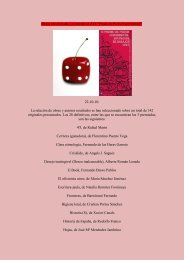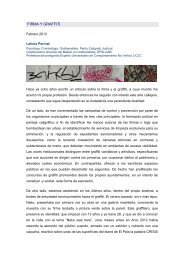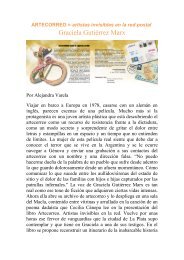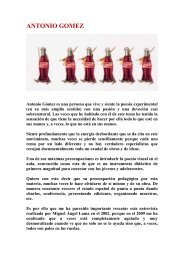Create successful ePaper yourself
Turn your PDF publications into a flip-book with our unique Google optimized e-Paper software.
Ray Johnson<br />
<strong>50</strong> years of Mail-art<br />
It is unclear precisely how the Mail-<strong>Art</strong> was born, but we agree to find it a father, Ray Johnson The most famous<br />
unknown artist in New York who founded the "New York Correspondance School" 1 in 1962, an informal network to<br />
exchange <strong>mail</strong>, baptized by one of its correspondents Edward M. Plunkett and that Ray Johnson defined as: "the<br />
only way to understand something at my school is taking part for a while. It's secret, private and has no rules." the art<br />
of Ray Johnson was not exhibited or sold, we had access only through exchange. The <strong>mail</strong>ing was a substitute to<br />
the conventional circuit of galleries to disseminate his art.<br />
One can of course find a lot of "ancestors" of <strong>mail</strong> art as the story begins with the invention of a <strong>mail</strong> transport<br />
service (folds decorated of 18th century are known). This story is developing in the 19th century with the first<br />
postcard (Austria - 1869) and experiences of artists: Mallarmé, Apollinaire, Erik Satie, and in the 20th century with<br />
the Italian Futurists, the Dadaists, Kurt Schwitters, Marcel Duchamp .. .<br />
This was only the beginnings of a new art form: poetry or curious items, collages, letters whose address was in the<br />
form of a riddle, a poem, a picture poem, stationery or postcards decorated which were trading in a narrow circle<br />
of artists.<br />
Ray Johnson has introduced new concepts: it is no more to make beautiful envelopes or broadcast a message to<br />
one way, this is an act of artistic communication, an alternative way of disseminating his work , exchange and to<br />
come into contact with the world.<br />
In the ensuing years, other artists are reinventing the <strong>mail</strong> art. It was no longer a limited communication to a tight<br />
inner circle of friends, on the contrary the network of exchanges should extend to infinity.<br />
A dozen homes of <strong>mail</strong> art appeared during the late 1960s: in South America, Japan, the USA, Europe ... It was often<br />
spontaneous homes with no direct link to Ray Johnson or Fluxus group and often ignoring their ancestors. And<br />
to the early 1970s the Mail <strong>Art</strong> really get off and "networks" began to form connecting countries and continents.<br />
The number of participants in these networks ranged from tens to hundreds. In total, several thousand <strong>mail</strong>s artists<br />
were active during the period 1970-1980. Today, there is a stable core of 300 to <strong>50</strong>0 practitioners and many casual<br />
players. By 1970, exhibitions were held giving new impetus to the <strong>mail</strong>-art, the earliest and most notable include<br />
Ray Johnson exhibition at Whitney Museum of American <strong>Art</strong> in 1970, the section Mail-<strong>Art</strong> organized by Jean-Marc<br />
Poinsot at the Paris Biennale in 1971, Mantua Mail in Mantua in 1978, Mail-<strong>Art</strong> section of the Biennal of Sao Paulo<br />
organized by Walter Zanini in 1981. Mail-art and has gained currency in the official exhibitions and some galleries,<br />
but there is always an international network with hundreds of artists exchanging and communicating freely outside<br />
institutional channels.<br />
Daniel Daligand<br />
May <strong>2012</strong><br />
1 The spelling "correspondance" instead of "correspondence" in English was not a typo, but a deliberate choice of Ray Johnson.<br />
He decided in 1973 that his school was dead and published a letter in the obituary column of the New York Times.<br />
39


